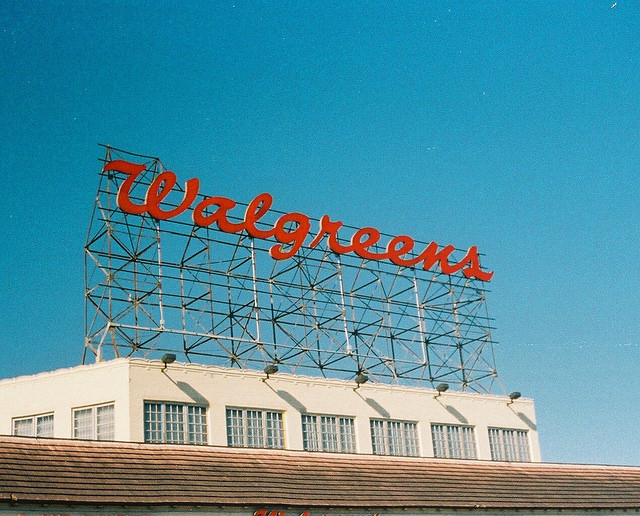If you were to ask anyone in retail what their biggest challenge has been in the last five years, chances are they’d all say the same thing: competing with online mega-retailers like Amazon. These retailers have made a name for themselves as being an affordable and convenient way to shop for absolutely everything in one go, and that’s very attractive for consumers. When they do head to stores, they are much less likely to grab unrelated items at a one-stop-shop, because they know that they can often get a better deal through these online marketplaces.
So, what does that mean for brick-and-mortar retailers? How do you keep customers coming into your store, when it’s less convenient and often a little more expensive? After all, your prices reflect your need to pay for overhead, while online retailers don’t need to maintain physical locations. If you are anything like this national chain, the answer is to focus in on what makes your location the most useful.Walgreens Narrows Focus on Pharmaceutical Sales
Just a few weeks ago, Walgreens announced that it would be closing around 600 stores across the nation, as part of their first round of efforts to reevaluate the chain’s assets. Despite their sales rising about 9.4% overall, the improvement was only seen in pharmaceutical sales. The other retail sales for the chain actually fell by nearly 3%.How is the chain handling the ongoing decline in retail sales? By narrowing their focus to where they are growing: the pharmacy. A top executive from Moody’s Investors cited that 70% of Walgreens’ sales were all pharmacy-related.
The data shows that people who go into Walgreens these days make a beeline for the pharmacy. They grab their medications, and maybe a few things from the pharmacy area like reading glasses or sleep aids, and then check out. They completely ignore the rest of the store, where Walgreens offers everything from basic groceries to hygiene products and home goods.
The chain estimates that from 2018 to 2020, the switch to a more focused brand will save them $300 million each year.
What’s the Lesson?
The lesson from Walgreens and many other corporations like it is that narrowing your focus to what is working, and cutting out the rest, may be the only way to survive in a world where consumers are taking their “one-stop” shopping online – seemingly for good.

Walgreens New Orleans. Photo by Peter Burka
3 Retail Tips for Niche Sales
If you’ve always been the type of company that offers a wide range of products, you’ll learn right away that niche sales can be a little bit different. While the basics of marketing don’t change, there are some great things you can do with niche marketing that you can’t when your product base is so large. Here are some examples that companies like Walgreens have turned into successful techniques for their businesses.1. Develop a reputation as the local expert.
People who go to Walgreens for their pharmacy needs aren’t really treating the store like a retailer. They’re treating it as a medical facility. They ask the pharmacist questions, they get advice on their medications, and they use the pharmacy to communicate with their doctors. Walgreens has built a reputation as being the local expert for medications and basic health care needs, and that’s what has allowed them to keep growing in this area.If you are narrowing your business down from selling all auto parts to just selling tires, make sure your employees are tire experts. They should be able to answer any tire-related question a customer may have. This expertise is the value that you offer customers in exchange for giving up the convenience of online shopping.
2. Get even more specific about your ideal customer.
With a wider range of products, you are serving a larger customer base. But when you narrow your products, you’re also narrowing your focus to more specific customers. Where Walgreens may have once been serving “busy professionals needing to grab daily basics from a one-stop corner shop after work”, now they are serving “busy professionals needing to grab medications and get expert pharmaceutical answers after work”, for example. Walgreens’ ideal customer just shifted, from a broad range of all types of people who may need some basic goods, to people who need medications and medical advice. That’s an entirely new focus. For your business, you may be shifting from serving families who need casual clothing, to specifically selling clothing just for busy middle-aged mothers. Or you may have once offered a huge warehouse of home improvement supplies for everyone from the weekend warrior to the local contractor; but now, you only carry the specialty items that local contractors would need as soon as possible while on a job. As you can see, this narrowing of your ideal customer would definitely change the way you market your goods.

Walgreens sign in Little Havana, Miami. Photo by Phillip Pessar.
3. Keep solving your customers’ problems.
Finally, just because you are narrowing your product line, it does not mean that you aren’t still in the business of solving problems. For example, Walgreens may be closing down hundreds of locations, but they won’t be changing their standard “corner store” design. Always having their stores on a corner was something they implemented to solve a problem – namely, that it took customers with busy lives too long to get in and out of a store with the essentials. By putting their stores on a corner, Walgreens made it convenient to get in and out, no matter how busy the after-work rush hour may be.Whatever problem you solve for your customers through your company design or products, don’t stop following this vision. This is ultimately what sets any company apart from the retail giants like Amazon. Just like becoming an expert in your field, solving a unique problem for your customers is one of the ways that you offer them something that convenient online retailers do not.
As the future of retail continues to shift, we may see even more companies choosing to narrow their focus to niche sales. You can get ahead of this trend and save big bucks this year with these tips.